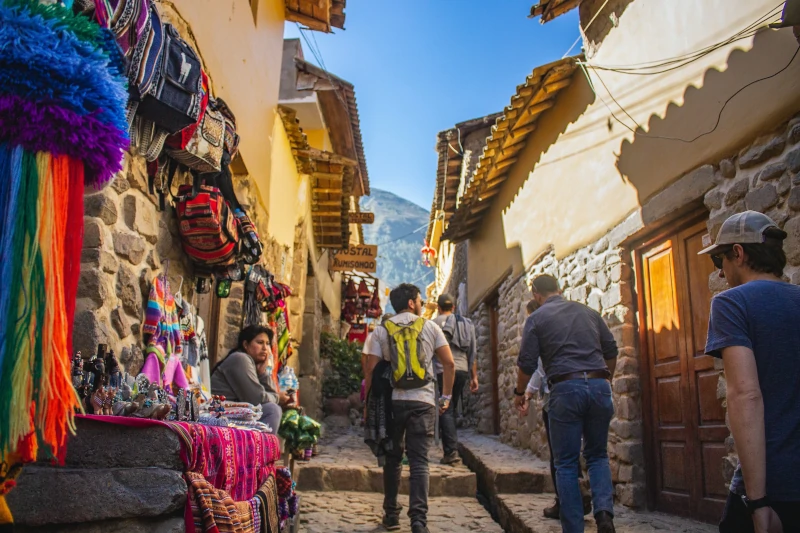Altitude sickness is a common concern for travelers embarking on the breathtaking journey to Cusco, the historic capital of the Inca Empire. Nestled at a staggering 3,399 meters (11,152 feet) above sea level, Cusco’s high elevation presents a unique challenge to visitors from lower altitudes. However, with proper preparation, visitors can acclimate to the altitude and enjoy their time in the city.
In this article, we will explore the causes, symptoms, and effective strategies for dealing with altitude sickness in Cusco. This will ensure that you can fully embrace the rich cultural experiences and enchanting landscapes of this ancient city without compromising your well-being.
Understanding altitude sickness: Causes and symptoms
Altitude sickness, also known as acute mountain sickness (AMS), is a condition that affects individuals who ascend to high altitudes too quickly. It typically occurs at altitudes above 2,400 meters (7874 feet) and can be dangerous if not recognized and treated promptly.
The main cause of altitude sickness is the decrease in air pressure and oxygen levels at high altitudes. Thus, it makes it harder for the body to function properly. As a result, individuals may experience a range of symptoms such as headaches, nausea, vomiting, dizziness, and fatigue.
Altitude sickness can affect anyone regardless of their fitness level, age, or previous experience with high altitudes. Individuals with preexisting medical conditions such as heart or lung disease may be at a higher risk of developing altitude sickness. Therefore, they should consult with their healthcare provider before traveling to high altitude destinations like Cusco.
The severity of altitude sickness can vary from mild to life-threatening. Mild symptoms usually go away on their own within a few days as the body adjusts to the new altitude. However, severe symptoms such as difficulty breathing or confusion require immediate medical attention.
To prevent altitude sickness, it is recommended to ascend to high altitudes gradually. This will allow the body to acclimate to the changes in air pressure and oxygen levels, reducing the risk of altitude sickness. It is also important to stay hydrated, avoid alcohol and tobacco, and to rest frequently.

Tips to prevent altitude sickness
Cusco, Peru is a popular destination for tourists interested in exploring Machu Picchu and the Sacred Valley. However, the high altitude of the region can put travelers at risk due to altitude sickness.
To prevent altitude sickness in Cusco, it is important to prepare for your trip ahead of time. First, it is recommended to spend a few days in a lower altitude location before arriving in Cusco. This will allow your body to acclimate gradually, reducing the risk of altitude sickness when you reach the high altitude destination.
It is also important to stay hydrated by drinking plenty of water and avoiding alcohol and caffeine. Additionally, it is recommended to consume foods that are high in carbohydrates and low in salt. This will help maintain electrolyte balance, which can be crucial in preventing altitude sickness.
While in Cusco, it is important to take it easy and avoid strenuous activities for the first few days to allow your body to adjust to the altitude. If you experience any symptoms of altitude sickness such as headaches or nausea, it is important to rest. In addition, you should seek medical attention if necessary to prevent the symptoms from worsening.
By taking the necessary precautions, you can enjoy your trip to Cusco without the risk of altitude sickness. Remember to listen to your body and seek medical attention if you experience any symptoms. With proper preparation, you can have a safe and enjoyable trip to this beautiful region of Peru.

Remedies and treatment options
Altitude sickness can be a challenging condition to manage, but there are remedies and treatment options available to help alleviate symptoms.
One popular remedy for altitude sickness is coca tea, which is made from the leaves of the coca plant. Additionally, this tea is commonly consumed in the Andes region to alleviate symptoms of altitude sickness. It is believed to help alleviate symptoms such as headaches and nausea.
Over-the-counter pain relievers can also help manage headaches and other symptoms of altitude sickness. However, it is important to consult with a healthcare provider before taking any medication.
If symptoms of altitude sickness become severe, oxygen therapy may be necessary to increase oxygen levels in the body. In extreme cases, descent to a lower altitude may be required to alleviate symptoms.
In addition to these treatment options, it is important to take preventive measures to reduce the risk of altitude sickness. Gradual ascent to higher altitudes, staying hydrated, and avoiding alcohol and smoking can all help reduce the risk of altitude sickness. Therefore, it is recommended to follow these measures when traveling to high altitude destinations like Cusco.
It is important to note that while these remedies and treatment options can help manage symptoms, they are not a substitute for proper medical care. If you experience severe or persistent symptoms of altitude sickness, it is important to seek medical attention.
Overall, there are several remedies and treatment options available to manage symptoms of altitude sickness, including coca tea, over-the-counter pain relievers, and oxygen therapy. However, prevention is key, and taking preventive measures can reduce the risk of developing altitude sickness in the first place.




